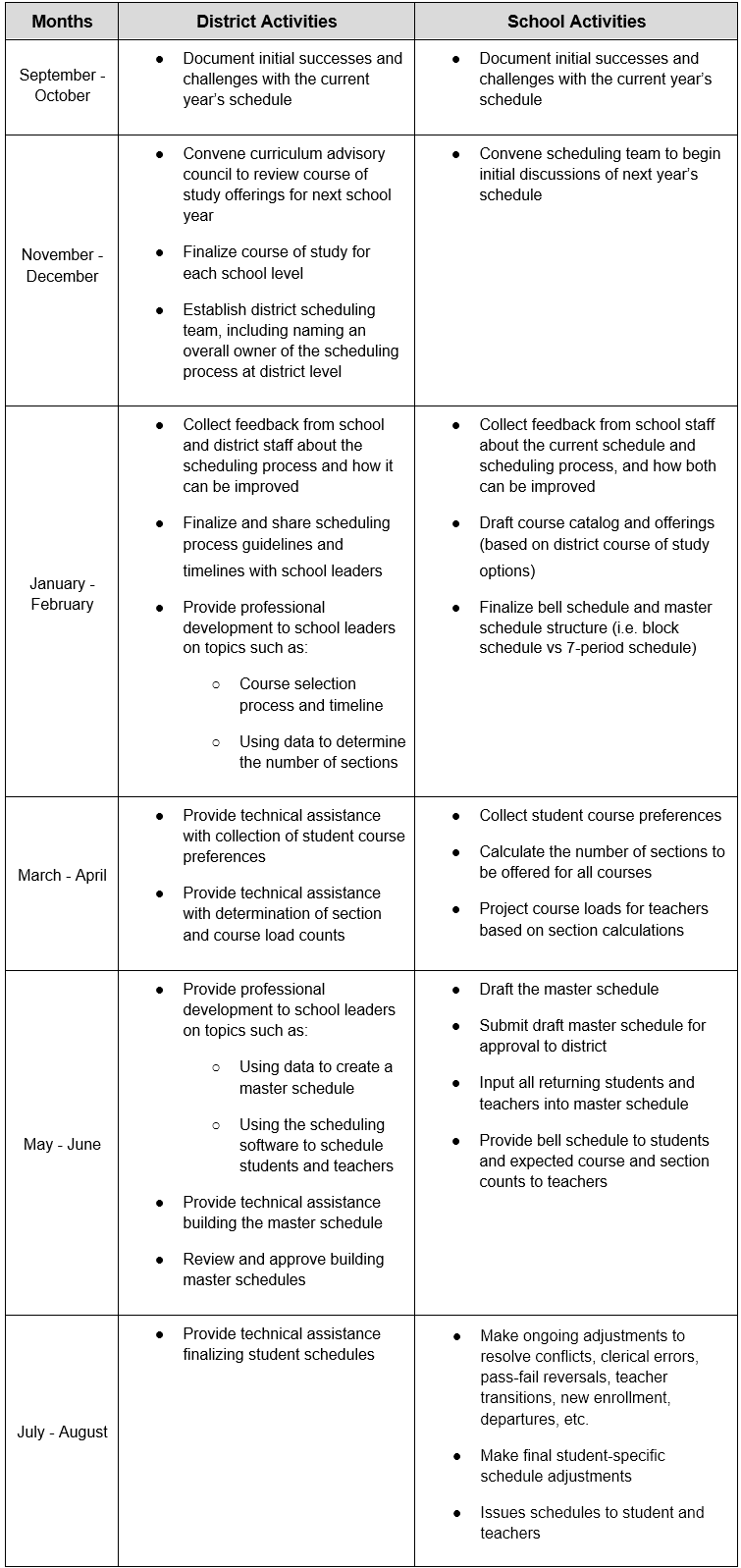At its best, a secondary school’s scheduling process is a twelve-month interactive process that involves on-going communication between school leaders and teachers, district staff, department heads, data teams, and students and families, among others. But, in DMGroup’s work with schools and districts across the country, we often encounter the following three approaches that can foil a successful secondary scheduling process:
- “The schedule for next year must be done by the last day of school this year.” While sharing schedules with teachers and students in May or June can undoubtedly put people at ease before heading into the summer, schools that take this approach often find themselves having to make many unanticipated and frustrating last-minute changes in August or September. Sharing only an estimation of what subjects and how many sections of each subject teachers will be expected to teach (instead of what periods during the day they will teach) puts a school scheduling team in a much better—and less stressful!—position come fall.
- “We don’t need to think about the schedule until the summer.” School and district leaders often have more time over the summer, but waiting so long to focus on scheduling leaves little time to pressure test any changes to the schedule. This can result in schedules with unforeseen or unanticipated outcomes, such as when two popular single-section AP classes conflict in the schedule. This strategy also leaves teachers and staff unsure of what to expect in the fall and frustrated when changes to the schedule are rolled out with limited guidance or support. Strong scheduling teams start thinking about potential improvements to the schedule in the fall and winter instead of waiting until the school year is over.
- “We don’t need to make any changes—let’s just roll over this year’s schedule to next year.” While most schools do not (and should not) make significant, structural changes to their schedule on an annual basis, the best scheduling teams constantly refine and improve their school’s schedule. Schools that simply “roll over” the schedule miss the opportunity to make adjustments based on student enrollment and need.
A Better Way
A better way is to map out the annual scheduling process and share it with teachers and staff before in-depth conversations about the schedule begin. Provided below is DMGroup’s recommended calendar for designing secondary school schedules.
Be sure to make it clear who is responsible for each part of the process and how decisions will be made. Communicating these points at the beginning of the scheduling process can help ensure teachers and staff recognize how they can contribute to the process and when they can expect key scheduling updates to be shared. This is especially important if a school or district is considering significant changes to the schedule (i.e. switching from block schedule to 7-period schedule).
Remember: Up-to-date data about student enrollment, student course preferences, and staffing are the lifeblood of the scheduling process. As new data becomes available to schools and districts over the course of the spring and summer, school schedules should be updated accordingly—not remain static until the week before school.
Are you interested in developing your school or district team's capacity to plan, build, and implement a best-in-class schedule at the middle school or high school level? Join us for our Secondary Scheduling Institute and build your team’s capacity to build best-in-class schedules.
Did you miss our previous blog about secondary scheduling? Read how to differentiate “must have” priorities from “nice to have” priorities and the importance of scheduling as a team.
Sample Calendar of Key Secondary Schedule Activities


